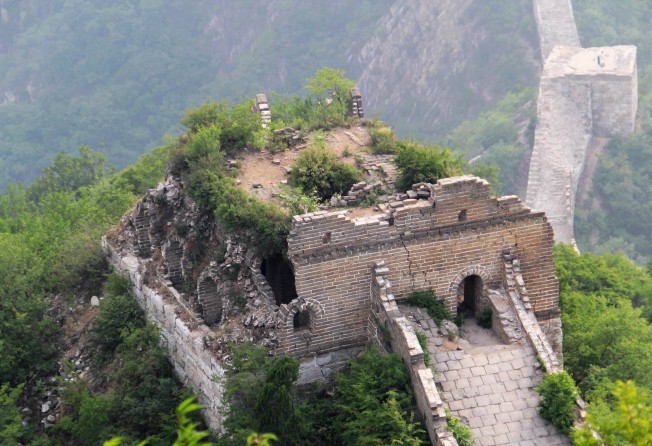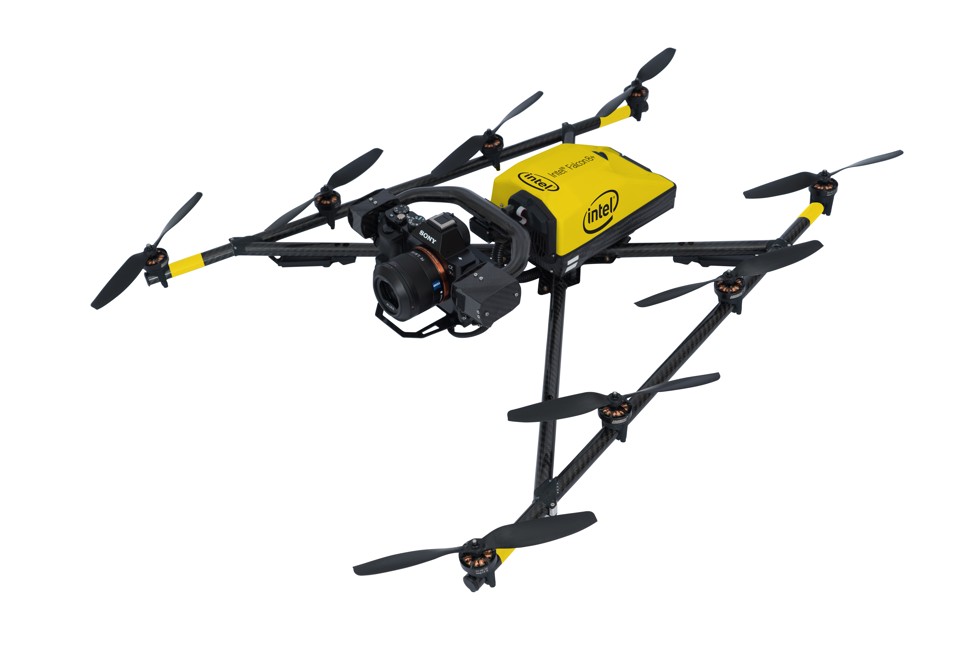
China’s crumbling Great Wall is getting some hi-tech conservation help from drones
Semiconductor giant Intel teams up with the China Foundation for Cultural Heritage Conservation in efforts to conserve and repair the Great Wall’s severely weathered Jiankou section

China, home to the second largest number of World Heritage Sites, is getting some hi-tech help from drones to bolster conservation efforts at the crumbling Jiankou section of its Great Wall.
Already used in logistics, transport and agriculture, the deployment of the remote-controlled flying machines in heritage conservation marks a further use of the advanced technology in the country.
Intel and the China Foundation for Cultural Heritage Conservation joined forces last week to use the US semiconductor giant’s drone and artificial intelligence (AI) technology to help scout a remote and severely weathered section of the Great Wall constructed during the Ming dynasty, which spanned the 14th to 17th centuries.

“Using drones, we are able to inspect multiple aspects of the structure, including areas that are quite inaccessible,” Anil Nanduri, the vice-president and general manager of Intel’s drone team, said in a statement.
Intel’s Falcon 8+ drones will be used to inspect, map and take aerial photographs of the Jiankou section in the next few months, providing high-definition three-dimensional images that will help determine the site’s current condition.
Using drones, we are able to inspect multiple aspects of the structure, including areas that are quite inaccessible
The US company’s AI data capture system will create a visual representation of the Jiankou section to identify the parts of the structure in need of repair.
“The partnership with Intel and introduction of new technology provides a new model for the country’s conservation of World Heritage Sites,” Li Xiaojie, chairman of China Foundation for Cultural Heritage Conservation, an organisation supervised by the State Administration of Cultural Heritage, said in a statement.
Use of drones in China’s heritage conservation efforts follow the inroads made in various industries, as the country has become a hotbed for innovation in unmanned aerial vehicles.
Shenzhen-based start-up DJI, founded in 2006, has become the world’s largest maker of recreational drones, with an estimated 70 per cent global market share. Its drones are also used by businesses and militaries around the world.

The use of drones has also become increasingly popular among Chinese farmers. Official data showed that the area covered by drones for crop dusting reached 4.7 million acres in 2016, more than twice the area covered in the previous year.
The market for agricultural drones on the mainland could reach 100 billion yuan (US$15.8 billion) per year, according to recent government estimates.
E-commerce rivals JD.com and Alibaba Group Holding, which is the parent of the South China Morning Post, separately launched drone delivery services last year at several locations on the mainland. Both companies plan to widen adoption of drones this year, extending the logistics capabilities of both companies.
Anticipation for the next evolution of drones in China intensified in February after Ehang, a Guangzhou-based drone maker, successfully conducted passenger flights for its autonomous flying taxi. The manned flights of the Ehang 184 have given a boost to the efforts of technology companies and the central governments to optimise urban transport and mobility with new products and services.
For Intel, it is now looking forward extend its drone and AI technology to the preservation of more World Heritage Sites, according to Nanduri, the firm’s drone team general manager.
With 52 Unesco World Heritage Sites – just one fewer than Italy – and a quarter of the planet’s population, China plays an important role in the preservation of the world’s cultural sites.

The Great Wall is a series of fortifications, built along an east-to-west line across the historical borders of China to keep out marauding invaders.
Its Jiankou section, which runs for more than 20 kilometres at 1,141 metres above sea level, is one of its steepest stretches. Its name is translated as “arrow nock” in English, for the shape of the section’s collapsed ridge opening.
It is located about 70 km north of central Beijing, with most of its structure hanging on cliffs and steps in some areas worn away.
With some parts of the section on steep inclines and the site in dense forest, it has posed a big challenge for the conservation group to assign personnel to physically inspect and take pictures of the whole section.
Despite its dilapidated state and a difficult to reach location, the Jiankou section has become a popular site for photographers because of the beautiful landscape.

Li, the chairman of the conservation foundation, said the dire condition of the Jiankou section and the enormous scale of repair needed led the group to turn to public donations and seek help from various organisations.
“Our partnership with Intel has opened new avenues for preservation,” Li said.
Intel used its drones and AI technology in December last year to help the conservators of the 15th century Halberstadt Cathedral in Germany make a damage assessment to plan and commission restoration projects.
Outside conservation, Intel has its sights set on more commercial uses of its drones and AI technology. In March this year, the chip maker and an Australia-based inspections firm used drones to map oil and gas facilities in that country.